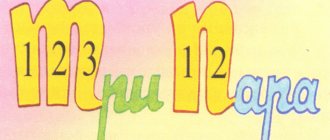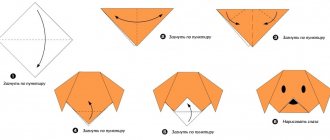Dyslexia is the generic name for a group of disorders that cause problems reading and understanding printed information. A deviation occurs against the background of a person’s normal mental, neurological and psychological state. This disease manifests itself in several forms, one of which is semantic dyslexia.
What is semantic dyslexia?
This type of violation in the acquisition of reading skills consists of a lack of understanding of read words, phrases and, in general, printed information. This type of pathology is also called mechanical reading, since technically the child verbalizes information completely correctly, but cannot convey or retell the essence of what he read.
Semantic dyslexia is based on:
- difficulties of sound and syllabic analysis, that is, the child’s inability to mentally connect combinations of sounds into their complexes (words, phrases) and, accordingly, perceive their meaning;
- misunderstanding of syntactic connections - each word during the reading of information is perceived as a separate unit, in no way connected with other members of the sentence.
Correction or treatment of dyslexia?
The only correct answer is correction, which is carried out exclusively by pedagogical methods and special physical exercises aimed at coordinated work of the brain hemispheres, overcoming motor difficulties, and the formation of correct neurodynamics.
These are the methods used to correct dyslexia at the Tatyana Goguadze Dyslexia Center. We do not treat dyslexia and certainly do not use drug treatments.
The experience of our work shows that the main dyslexic difficulties can be overcome in 14 days and for this children do not have to write or read, since the work is carried out at the level of changes in brain rhythms, that is, the root cause of dyslexia is eliminated, and its consequences are not eliminated.
At the Tatyana Goguadze Dyslexia Center, significant attention is paid to the prevention of dyslexia and various learning difficulties that children face at school.
We help both children and adults, because dyslexia can be corrected at any age!
Why does semantic dyslexia occur in children?
The development of dyslexia is based on neurobiological reasons. Pathology occurs as a result of poor development or dysfunction of various brain structures. Research shows that in dyslexics, the posterior part of the left middle temporal gyrus is less active than in people who do not have reading difficulties.
In general, the reasons for the formation of semantic dyslexia can be:
- hereditary factors - mutation of certain genes leads to improper development of neurons in certain brain areas and, as a result, causes dyslexia (a key factor in the formation of pathology in almost 70% of dyslexics);
- defective interaction of the cerebral hemispheres, as a result of which reading or writing causes insurmountable difficulties;
- lack of listening, learning and independent reading in the preschool years, which leads to poor development of connections between neurons in the speech center of the brain;
- physical brain damage and birth trauma;
- disruptions in intrauterine development;
- various types of infectious diseases (measles, rubella, severe forms of influenza);
- pedagogical neglect;
- early psychotraumas.
Causes
The etiology has not been reliably elucidated. A number of factors have been identified that, individually or together with each other, can increase the likelihood of a disorder:
- Genetic predisposition . The problem often manifests itself in several generations in the same family. This is due to inherited characteristics of the functioning of certain areas of the brain. The nature of the transfer is still being established.
- Biological factors. Many children have a history of complicated pregnancy, manifested in the form of minimal brain dysfunction. Chronic somatic pathologies, traumatic brain injuries and severe infections are also significant.
- Social and psychological reasons . The period of most active development of mental functions occurs before the age of 3 years. If there has been a lack of verbal, sensory and emotional contact during this time, this may have a negative impact on some complex information processing functions.
There are several theories of the formation of the mechanism of the disorder: phonological deficit, problems with auditory or visual processing of information, cerebellar disorders, difficulties in establishing connections between parts of the brain responsible for different ways of perceiving and processing data.
Signs of semantic dyslexia
Semantic dyslexia has a number of fairly characteristic symptoms, upon noticing which parents may suspect the presence of this pathology in a child, namely:
- the inability to understand the meaning of what was said after reading words, phrases or sentences;
- difficulties in retelling information read;
- mechanical nature of reading;
- lack of meaningfulness when voicing printed information;
- mainly reading syllables;
- frequent pauses between letters and syllables;
- guessing words while reading.
It remains important that the child can read normally, pronounce sounds and letters, and even use intonation correctly. However, these circumstances depend on the baby’s mental abilities and general preparation. In the presence of this pathology, the difficulty lies precisely in understanding the meaning of the material, and not in reproducing printed characters.
Additional symptoms common to almost all dyslexics are:
- attention deficit disorder;
- disorientation;
- hyperactivity;
- increased excitability;
- vivid emotional reactions;
- poor organization, absent-mindedness;
- clumsiness and poor coordination;
- irritability.
Diagnostics
The diagnosis is made by a speech pathologist. The study of oral and written speech is carried out. If there are indications, some subjects are referred for consultation to a neurologist or psychiatrist. The diagnostic process takes into account:
- Oral speech. The specialist evaluates vocabulary, sound pronunciation, syllable structure and other parameters. Signs of dyslexia are difficulties in choosing synonyms, explaining the meanings of words, and preparing a story from pictures.
- Written speech. Texts are used that correspond to the age development of the subject. Tasks include reading individual syllables and words, entire sentences, full text, finding specified letters, etc. The study evaluates reading speed and technique, ability to retell and answer questions.
- Neuropsychological characteristics. The technique involves assessing the level of coordination of movements, visual and auditory memory, actions in the field of visual-spatial gnosis, and the ability to recognize the shape and structure of objects by touch.
When is the best time to start classes?
To prevent a child from having problems with reading and writing in elementary school, it is necessary to carry out corrective work to overcome speech impairment. If a child with dysarthria has not been taught, then difficulties may arise in mastering literacy. If work to overcome speech deficiencies began to be carried out at school age, then it is necessary to simultaneously correct the pronunciation of sounds.
The sooner you start correcting dyslexia and dysgraphia, the easier it will be for your student to master the school curriculum. Because the school curriculum will become more complex, the child may have more errors in reading and writing. In addition, there is a possibility that by adulthood, errors while reading and writing words become automated and will be more difficult to eliminate.
Dyslexia and dysgraphia can be successfully corrected, provided that the form of the disorder is correctly identified. The key to the success of your classes is their systematicity and consistency, and the correctly selected method of therapy. The intensity of the lessons depends on the individual characteristics of the child and the forms of dysgraphia and dyslexia.
Symptoms
Diagnosis of this disorder is carried out in elementary school, when the symptoms manifest themselves most clearly. In preschool age, only the prerequisites for the appearance of dyslexia can be determined. When children are just beginning to learn to read and write, the presence of errors is natural, so it is difficult for a specialist to determine whether they are physiological in nature.
The main symptom is errors in reading.
The baby does not remember the letters, pronounces them incorrectly, rearranges them, replaces them with others, and does not understand the meaning of what he read. He has difficulty translating sounds into letters, and recognition of familiar words is slower than other children, and there are difficulties in mastering writing skills.
In addition to speech symptoms, children with dyslexia exhibit the following signs of impairment:
- spatial disorientation (confuses where is up and down, right and left);
- disturbances in coordination;
- motor sphere is impaired;
- memory is insufficiently developed;
- with a high level of intelligence, the child has difficulty mastering reading;
- violations of the tempo-rhythmic aspect of speech.
If you notice that your child has most of the listed symptoms or had a complex speech disorder during the preschool period, then you should seek advice from a speech therapist.
General information
Most often, dyslexia is diagnosed in younger schoolchildren during preparation for education or in the first grade.
Teachers and parents notice that while reading, the child does not reproduce certain sounds, swallows them, or pronounces them incorrectly. There may also be a problem with recognizing punctuation marks, which is why the child places intonations incorrectly when reading, confusing where the beginning and end of the sentence are. In most cases, signs of dyslexia in primary schoolchildren and adolescents are combined with symptoms of dysgraphia, another disorder of higher mental activity associated with writing impairments.
Preventive measures
Due to the fact that in modern speech therapy there is a sufficient amount of information about dyslexia with dysgraphia, it is now possible to prevent the occurrence of violations of the reading and writing processes. The purpose of such classes is to help children master literacy. Exercises should not be carried out in the form of lessons, but as didactic games:
- A game with cards with a word written on them. Make up a sentence from them and read it out loud. The adult invites the child to compose a sentence from the cards by ear on their own.
- The child is given a dictation to write an excerpt from a fairy tale or his favorite story.
- This is an exercise to develop phonemic awareness. The child is shown cards with their names written on the reverse side. The adult says the word, and the child must independently find the appropriate picture.
- Composing words from syllables.
Such preventive tasks will allow you to develop and refine initial reading and writing skills. Offer your child tasks to improve writing skills, because reading and writing are interconnected, therefore, in addition to dyslexia, the child will have difficulties with writing - dysgraphia.






